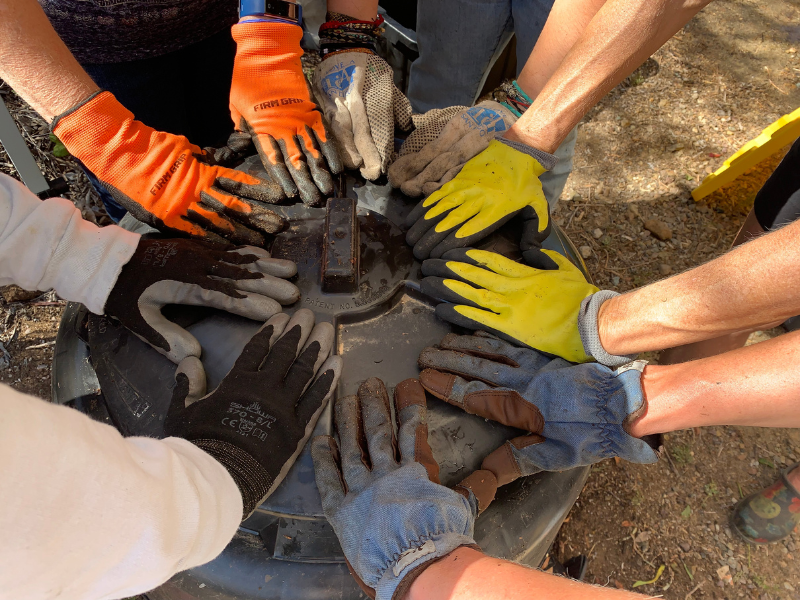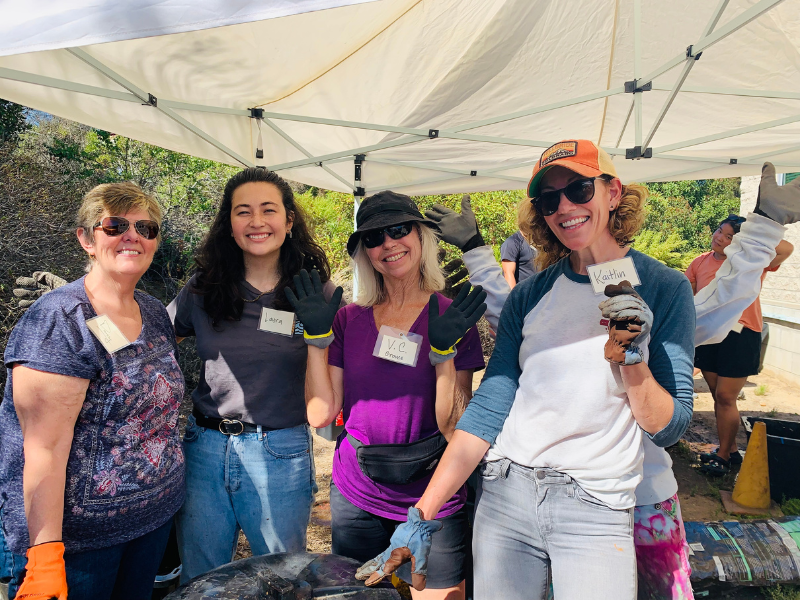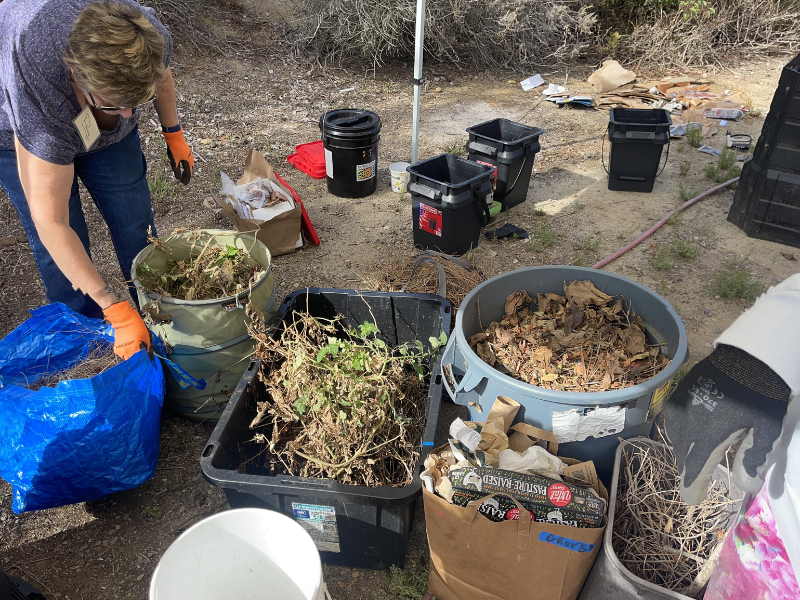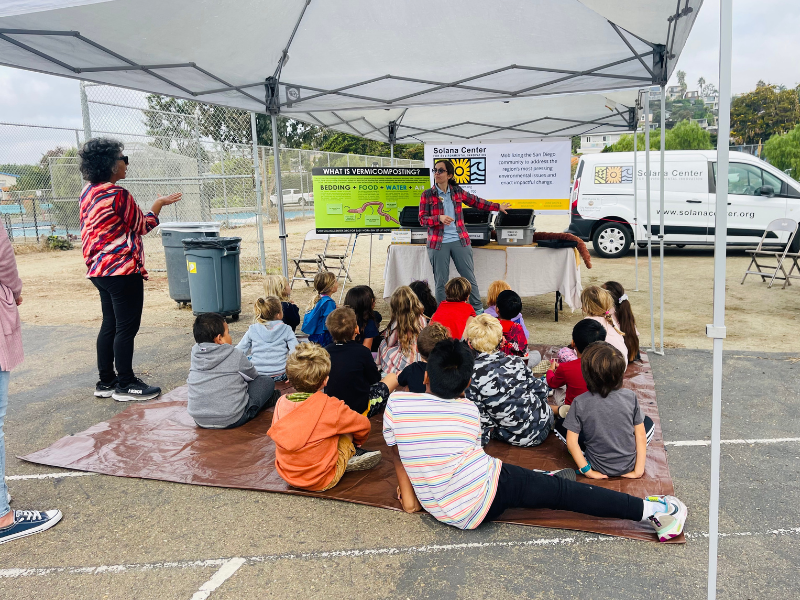Learnings from a Master Composter Course

These observations were originally shared by Kaitlin Mitchell of Rutabega Education and have been edited for cohesiveness.
Solana Center’s Master Composter courses are a unique opportunity to gain a more in-depth understanding of the art and science of the composting process and empower participants to share this knowledge and passion with others.
One participant in this program, Kaitlin Mitchell from Rutabaga Education, shared her experience from the course in a series of blog posts. Mitchell lists a variety of different takeaways and lessons learned from her time in the Master Composter course program. In this post, we’ve highlighted some of the key concepts from her blog.
General Takeaways

Considering becoming a Master Composter? Here are a few key things Kaitlin called out to expect to learn more about:
Composting can be done in many ways, with some methods being more passive and a cooler process (temperature-wise and slower to decompose) and others aggressive and hot (temperature-wise and much faster to reach the desired result).
Kaitlin Mitchell, Rutabaga Education
When considering the best composting style for you, keep in mind these two points:
- Motivation to compost and labor and time commitment
- Available compost materials and space (large yard = large space and compost receptacles, small yard or apartment = consider vermicomposting)
On the legal side of the composting world, Kaitlin highlighted the fact that the California State Senate Bill 1383 (SB 1383) will be making an ongoing impact in the organic waste diversion in San Diego. This bill is a “state-wide effort that will allow for the curbside collection of food scrap waste in addition to your yard and green waste.”
San Diego residents should look for information in the mail about this incredible and responsible movement. If done right, we’ll all be able to help decrease the waste sent to our landfills and, within that process, releases a massive amount of air pollutants that not only affect climate change but also contribute to health conditions, such as asthma.
Kaitlin Mitchell, Rutabaga Education
Composting 101 Tips and Tricks

Wondering how to get started composting? This is covered step by step over the span of the 5-week Master Composter course. Below, Kaitlin shared a few tips and tricks she learned in class:
Material Related Tips
- Compost pile makeup: Roughly 50/50 mix by weight of Nitrogen (greens) and Carbon (browns)
- Ingredients for compost: No matter what composting method you choose, the four main ingredients include Greens + Browns + Water + Air.
- Macrodecomposers as friends or foe:
- Friends:
- Redwigglers worms
- The best type of worm to use for composting
- Earthworms
- Good composter buddies but can’t compost in your bin on their own
- Fruit beetles LARVAE
- These busy crawlers break down larger bits of material for smaller decomposers to digest
- Pillbugs/Sowbugs
- Good decomposers for compost pile, but not good for seedlings
- Millipedes
- Good for eating rotting muck
- Redwigglers worms
- Neutral:
- Ants
- They won’t hurt your compost but can be annoying
- Earwigs
- Those little pinchers are scary but won’t harm you or your compost pile
- Centipedes
- Mostly carnivorous that eat other small bugs
- Ants
- Foe:
- Fruit beetles ADULTS
- Not great for plants if transferred to your garden bed, but the LARVAE are friends
- Fruit beetles ADULTS
- Friends:
- Water: The right amount is roughly the consistency of a wrung-out sponge
- Leachate vs Worm Tea: Don’t use Leachate on edible plants, only use Worm Tea
- Hot compost: Add more greens to make your compost hotter. Coffee grounds are an excellent source of nitrogen to help kick the process into high gear
- Recommended tools:
- Pitchfork
- Sturdy chopping clippers

Process Related Tips
- Speeding up: The more you chop up materials, the more surface area you create for those microorganisms to inhabit—which speeds up the process
- Curing: Your compost might be considered done if it is brown, broken down, crumbly, cooled, and with an earthy fragrance. Don’t, however, put this magical mixture straight into your garden. It still needs 3-4 weeks to cure
- Bokashi: Using Bokashi is a catalyst that can kick start the composting process and reduce odors.
- Spin: Spin tumbling composters 3-4 times a week
Definitions
- Leachate: excess water from the worm bin
- Worm Tea: brewed with castings and water
- Red Wigglers: type of worm that is ideal for vermicomposting
- Bokashi: Bokashi is a pre-composting process that utilizes “Bokashi Bran.” “Bokashi” is the Japanese term for “fermented organic matter” and allows for long-term storage of ALL food waste.
- Vermicomposting: composting with worms
A Summary of Kaitlin’s Overall Experience

Even if you consider yourself an avid and expert composter, there are still so many things to learn through the Master Composter course. It is also an amazing opportunity to learn from some knowledgeable and passionate educators and presenters from a variety of backgrounds and expertise.
“The Master Composter Course has been an AWESOME hands-on, mind-expanding, and soul (and soil) filling experience.”
Kaitlin Mitchell, Rutabaga Education
Once the 5 weeks of the course are up, participants are encouraged to share their knowledge and passion for composting by volunteering in the community with Solana Center educators. Mitchell along with many other participants has enjoyed meeting fellow students and getting to bond with people of similar interests in the community.
